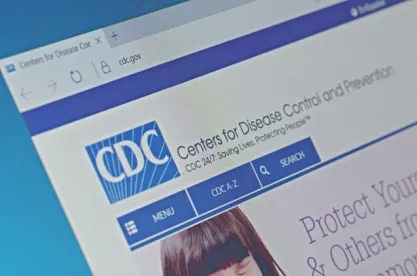On March 8, 2021, the U.S. Centers for Disease Control and Prevention issued new interim recommendations regarding individuals who have been fully vaccinated against COVID-19. As the COVID-19 vaccines have become more widely distributed, the new recommendations address how to manage vaccinated individuals with respect to social gatherings, contact tracing, and other mitigation matters in non-healthcare settings. The following are the key points about which employers may want to know and that they may wish to incorporate into their company procedures.
-
The CDC recommendations apply only to “fully vaccinated” persons, whom the CDC defines as those who are more than two weeks from having received the second dose of the Pfizer-BioNTech or Moderna vaccines or the single dose vaccine.
-
The recommendations ease face covering requirements for people who have been fully vaccinated. The CDC advises that fully vaccinated people need not wear masks or observe social distancing during indoor visits with other fully vaccinated people. The CDC recommends wearing masks and taking additional precautions based on the size of the gathering. Specifically, the CDC states that “visits or small gatherings likely represent minimal risk to fully vaccinated people,” though vaccinated people should be mindful of the increased risks to others in medium or large gatherings with people from multiple households. The CDC continues to recommend that all persons wear face coverings and observe social distancing when around unvaccinated individuals outside of a single household.
-
The recommendations provide an exception for fully vaccinated people from certain quarantine requirements. While vaccinated people should continue to be isolated when experiencing symptoms of COVID-19, the CDC states that vaccinated people with no symptoms “do not need to quarantine or be tested following an exposure to someone with suspected or confirmed COVID-19, as their risk of infection is low,” though such persons still should monitor for symptoms for 14 days following the exposure and isolate if they begin to experience symptoms. Notably, the exception to quarantine is no longer limited to the first 90 days after vaccination, as was the case with prior guidance.
-
In the case of employees of “non-healthcare congregate settings and other high-density workplaces,” such as manufacturing environments and meat and poultry processing plants, the CDC advises that vaccinated people who are exposed to an infected person need not quarantine, but the CDC recommends such persons get tested after the exposure and that they follow routine workplace screening programs.
-
The CDC emphasizes that fully vaccinated people should continue to take precautions in public and when around unvaccinated people outside of their own households, such as by wearing face coverings and physical distancing. The CDC notes that vaccinated people also should continue to “[f]ollow guidance issued by individual employers.”
-
The CDC is not altering its guidance with respect to travel for vaccinated people at this time.
For employers as well as individuals, the impact of these new recommendations is profound. First, employers may want to update their protocols and flowcharts for contact tracing and quarantine and testing requirements, while remaining mindful of guidance from state and local public health authorities. Second, employers may want to consider whether and how to track which employees have been vaccinated. Finally, the new recommendations may cause some employers to revisit the extent to which they encourage or incentivize employees to be vaccinated.




 />i
/>i

